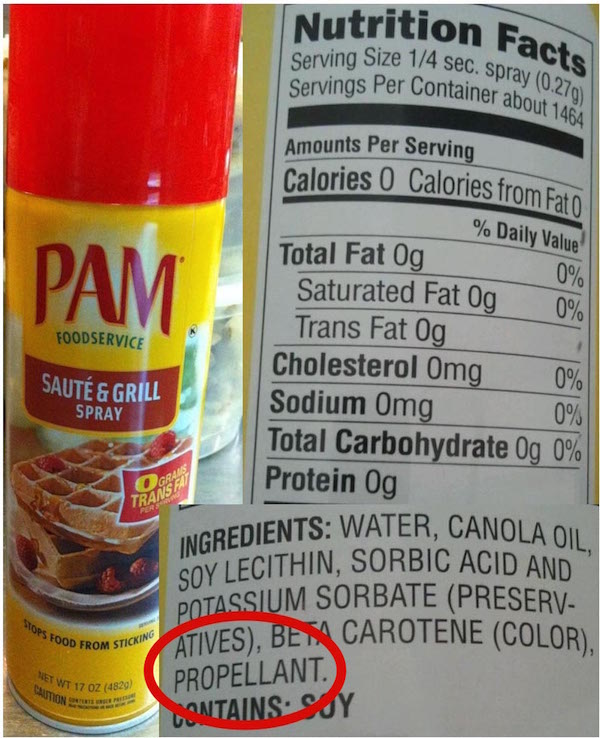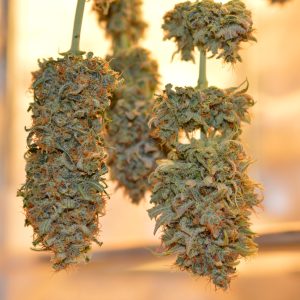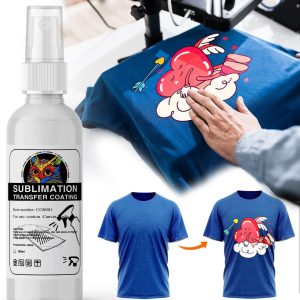
What is PAM Aerosol Spray and How Does It Work?
PAM aerosol spray has been a kitchen staple for decades, providing home cooks with a convenient way to prevent food from sticking to pans and baking dishes. This popular cooking spray contains a carefully formulated blend of oils and propellants designed to create an even, non-stick coating on cookware surfaces. The aerosol delivery system allows for precise application and consistent coverage, making it an attractive option for busy home cooks and professional chefs alike.
The PAM aerosol spray mechanism works through pressurized propellants that force the oil mixture through a specialized nozzle, creating a fine mist that covers cooking surfaces evenly. When you press the actuator button, the internal pressure pushes the oil and propellant mixture through the valve system, atomizing the contents into tiny droplets that adhere to your cookware. This process ensures that you use minimal oil while achieving maximum coverage, which is why many people consider it more efficient than traditional cooking oils or butter.
Understanding how PAM aerosol spray functions helps explain both its popularity and the concerns some consumers have raised about its ingredients. The pressurized system requires specific propellants to work effectively, and these chemicals have become a point of discussion among health-conscious consumers who want to understand exactly what they’re using in their kitchens.
Key Ingredients in PAM Aerosol Spray
Primary Oil Components
The foundation of PAM aerosol spray consists of various cooking oils, with the original formulation primarily containing canola oil. Different varieties of PAM contain different base oils, including olive oil, coconut oil, and butter-flavored options. These oils provide the actual non-stick properties that prevent food from adhering to cookware surfaces.
Canola oil serves as the primary ingredient in classic PAM aerosol spray due to its neutral flavor profile and high smoke point. This makes it suitable for a wide range of cooking applications, from sautéing vegetables to baking delicate pastries. The oil content typically represents the largest percentage of the product by volume, excluding the propellants.
Propellant Systems
The propellants in PAM aerosol spray are what enable the aerosol delivery system to function properly. Common propellants include:
- Isobutane – A hydrocarbon gas that provides consistent pressure
- Propane – Another hydrocarbon that helps maintain spray consistency
- Butane – Used in combination with other propellants for optimal performance
These propellants are considered safe for food use at the levels present in cooking sprays, though they are flammable and require careful handling around heat sources. The propellants evaporate quickly after application, leaving only the oil coating on your cookware.
Additional Additives
PAM aerosol spray contains several additional ingredients that serve specific purposes:
- Soy Lecithin – Acts as an emulsifier to help oil and other ingredients blend properly
- Dimethyl Silicone – Provides anti-foaming properties and helps prevent splattering
- Natural Flavors – Added to butter-flavored and specialty varieties
- Rosemary Extract – Sometimes included as a natural antioxidant
Food safety experts consider soy lecithin and dimethyl silicone to be generally safe food additives when used in appropriate quantities.
Safety Considerations and Health Effects
Flammability Concerns
One of the most important safety considerations with PAM aerosol spray involves its flammability. The propellants such as propane and butane make the product highly flammable, and exposure to excessive heat can cause the can to explode. This risk has led to several important safety guidelines:
Storage Safety:
- Never store PAM aerosol spray near heat sources like stoves or ovens
- Keep cans away from direct sunlight and extreme temperatures
- Store in cool, dry locations below 120°F (49°C)
- Avoid storing in cars during hot weather
Usage Safety:
- Never spray PAM aerosol spray directly onto hot surfaces or open flames
- Allow cookware to cool before applying the spray
- Ensure adequate ventilation when using the product
- Keep the can upright during use for proper dispensing
Respiratory Considerations
Propellants like butane and isobutane can cause irritation if inhaled in large quantities, though normal kitchen use typically doesn’t result in problematic exposure levels. However, individuals with respiratory sensitivities should take precautions:
- Use PAM aerosol spray in well-ventilated areas
- Avoid inhaling the spray directly
- Consider alternatives if you have severe respiratory conditions
- Hold the can at arm’s length when spraying
Regulatory Status
All ingredients in PAM cooking sprays are labeled GRAS (Generally Recognized as Safe) by the FDA, indicating that they meet federal safety standards for food use. This classification means that regulatory authorities have determined the ingredients pose minimal risk when used as directed.
Proper Usage Techniques for PAM Aerosol Spray
Application Methods
Achieving optimal results with PAM aerosol spray requires proper technique and timing. The key to effective use lies in understanding when and how to apply the product for maximum benefit.
Pre-heating Application: Apply PAM aerosol spray to cold cookware before heating. This method provides the most even coverage and prevents the propellants from being exposed to high temperatures that could cause them to ignite or create unpleasant odors.
Distance and Duration: Hold the can 6-8 inches away from the cookware surface and spray in short, controlled bursts. A 1-2 second spray typically provides adequate coverage for most pans and baking dishes.
Coverage Patterns: Use a sweeping motion to ensure even distribution across the entire cooking surface. Pay special attention to corners and edges of baking pans where food is most likely to stick.
Cookware Compatibility
PAM aerosol spray works effectively with various types of cookware, but some materials respond better than others:
Excellent Compatibility:
- Stainless steel pans and baking sheets
- Cast iron cookware (when properly seasoned)
- Carbon steel pans
- Glass baking dishes
Good Compatibility:
- Ceramic cookware
- Enameled cast iron
- Aluminum baking pans
Use with Caution:
- Non-stick cookware (may cause coating buildup over time)
- Silicone bakeware (often unnecessary due to natural non-stick properties)
Cooking Temperature Guidelines
Understanding appropriate temperature ranges helps maximize the effectiveness of PAM aerosol spray while maintaining safety:
Optimal Temperature Range:
- Low to medium heat (300-375°F) for most cooking applications
- Medium-high heat (375-400°F) for searing and browning
- High heat (400°F+) should be used cautiously and with proper ventilation
Temperature Considerations: Different base oils in PAM aerosol spray varieties have different smoke points. Original PAM with canola oil can handle higher temperatures than olive oil varieties, which may begin to smoke at lower temperatures.
Environmental Impact and Sustainability
Propellant Environmental Effects
The environmental impact of PAM aerosol spray primarily stems from the propellants used in the aerosol system. While modern propellants like HFCs (Hydrofluorocarbons) don’t deplete the ozone layer like older CFCs, they still contribute to global warming potential.
Environmental Considerations:
- Propellant gases contribute to greenhouse gas emissions
- Aerosol cans require energy-intensive manufacturing processes
- Disposal of pressurized cans requires special handling
- Transportation of pressurized products increases carbon footprint
Packaging and Waste
PAM aerosol spray cans are typically made from aluminum or steel, both of which are recyclable materials. However, the pressurized nature of these containers presents recycling challenges:
Recycling Guidelines:
- Completely empty cans before recycling
- Check local recycling programs for aerosol can acceptance
- Some facilities require special handling for pressurized containers
- Never puncture or incinerate aerosol cans
Alternatives to PAM Aerosol Spray
Oil-Based Alternatives
Many home cooks seek alternatives to PAM aerosol spray due to concerns about propellants or personal preference for less processed options:
Brush-On Oils: Using a pastry brush to apply small amounts of oil provides similar non-stick properties without propellants. This method offers more control over oil quantity and eliminates concerns about chemical propellants.
Oil Misters: Pump-action oil sprayers allow you to create your own cooking spray using any oil of your choice. These devices use mechanical pressure instead of chemical propellants, making them environmentally friendly and customizable.
Butter and Solid Fats
Traditional cooking fats like butter, coconut oil, and shortening provide excellent non-stick properties, though they require different application methods:
Butter Applications:
- Room temperature butter spreads easily on cookware
- Provides flavor enhancement that PAM aerosol spray cannot match
- Works particularly well for baking applications
Coconut Oil Benefits:
- High smoke point suitable for high-temperature cooking
- Natural antimicrobial properties
- Solid at room temperature, making it easy to spread
Parchment Paper and Silicone Mats
Non-chemical alternatives to PAM aerosol spray include physical barriers that prevent sticking:
Parchment Paper:
- Eliminates need for any cooking spray
- Provides guaranteed non-stick surface
- Biodegradable and compostable options available
Silicone Baking Mats:
- Reusable alternative to disposable options
- Naturally non-stick surface
- Easy to clean and maintain
Storage and Shelf Life
Proper Storage Conditions
Maintaining the quality and safety of PAM aerosol spray requires attention to storage conditions. The pressurized nature of the product makes it sensitive to temperature extremes and physical damage.
Temperature Requirements: Store PAM aerosol spray in locations where temperatures remain between 50-80°F (10-27°C). Extreme temperatures can affect the pressure inside the can, potentially causing malfunction or safety hazards.
Physical Protection: Protect cans from physical damage that could compromise the integrity of the container. Dents, scratches, or other damage near the valve or seam areas could create safety risks.
Shelf Life Indicators
PAM aerosol spray typically maintains quality for 2-3 years from the manufacturing date when stored properly. Several indicators can help determine if the product remains safe and effective:
Quality Indicators:
- Consistent spray pattern and pressure
- Clear, fresh-smelling oil (no rancid odors)
- Proper valve function without clogging
- No visible rust or damage to the can
Signs of Deterioration:
- Weak or inconsistent spray pattern
- Off-odors when dispensing
- Visible oil separation or discoloration
- Valve malfunction or clogging
Cost Analysis and Value Comparison
Economic Considerations
Understanding the cost-effectiveness of PAM aerosol spray compared to alternatives helps consumers make informed purchasing decisions. While the initial cost per can may seem reasonable, analyzing cost per use provides a more accurate picture.
Cost Breakdown:
- Average cost per can: $3-5
- Approximate uses per can: 200-300 applications
- Cost per use: $0.01-0.025
Comparison with Alternatives:
- Bottled oil with brush: $0.005-0.01 per use
- Pump spray bottle: $0.003-0.008 per use
- Butter or solid fats: $0.02-0.05 per use
Value Considerations
Beyond pure cost analysis, PAM aerosol spray offers convenience factors that may justify the price premium for many consumers:
Convenience Benefits:
- No cleanup of brushes or applicators
- Consistent application every time
- Compact storage requirements
- Long shelf life without refrigeration
Time Savings: The quick application of PAM aerosol spray can save preparation time, particularly when cooking multiple items or when time is limited.
Commercial vs. Homemade Spray Options
DIY Cooking Spray Recipes
Creating homemade alternatives to PAM aerosol spray allows for complete ingredient control and customization:
Basic Oil Spray:
- 1 part oil (canola, olive, or preferred oil)
- 1 part water
- Mix in pump spray bottle
- Shake before each use
Flavored Variations:
- Add herbs like rosemary or thyme
- Include garlic powder for savory applications
- Use flavored oils for specialty cooking
Commercial Advantages
Despite the appeal of homemade alternatives, PAM aerosol spray offers several advantages that explain its continued popularity:
Consistency Benefits:
- Precise formulation ensures consistent results
- Professional-grade propellant system provides even coverage
- Extended shelf life without separation issues
- Quality control standards ensure safety
Convenience Factors:
- Ready to use without preparation
- No mixing or maintenance required
- Portable for camping or travel
- Consistent availability in stores
Ready to make an informed decision about PAM aerosol spray for your kitchen? Consider your cooking needs, safety preferences, and environmental concerns when choosing between PAM and its alternatives. Whether you stick with this convenient option or explore other non-stick solutions, understanding the facts helps you cook with confidence.





